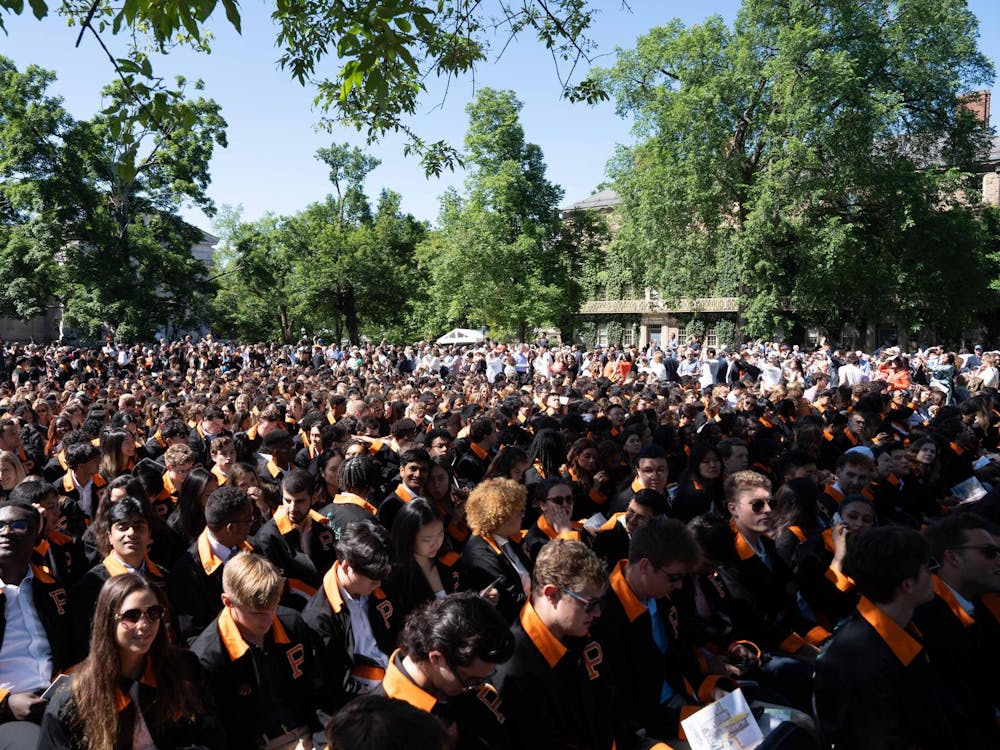It may be time to open Pandora’s box. I am speaking, of course, about the feasibility of integrating mixed modes of learning into Princeton’s humanities courses. Last month, in an article addressing the disillusionment with massive open online courses, Bennett McIntosh '16 argued that the most preferable educational model is one in which face-to-face interactivity prospers over the “mono-directional” trend of online educational services like Coursera. He says it is especially critical that the liberal arts encourage the personal encounters that characterize lecture halls. Whereas learning in the presence of professors and peers (see: precepts) allows one to appreciate the sense of community peculiar to a college campus, simply watching videos complicates one’s ability to acquire “critical thinking [skills and] a functional personal ethics system.”
While I understand the valuation of conventional modes of learning, I would like to expand on (and slightly modify) this approach. I am more inclined to align my views with those proposed by Lauren Davis '15 in her own column on MOOCs. Although Davis shares McIntosh’s sentiments about the irreplaceable function of the university campus, she acknowledges that Princeton will need to “borrow some of the innovations offered by the MOOC model” to maintain its status as a top-tier learning institution. One way the University might enhance its courses, she said, is by employing the “flipped” lecture model, which is popular among some of the nation’s leading schools. The flipped classroom is a form of blended teaching in which students watch lecture videos on their own and later apply theoretical concepts in group sessions.
Last Friday, the 'Prince' featured a story by Elizabeth Paul '15 on the mixed responses to the flipped format of COS 226: Data Structures and Algorithms, a class designed to revolve around an online instructional component. Although the flipped element was eventually made optional, Paul notes, “flipped lectures could provide students [with] the opportunity to more deeply explore course material.” Similarly, I believe the most ideally integrated online courses would supplement traditional learning methods instead of supplanting them. The question of humanities-related MOOCs persists, though. While it may be simpler to render mathematical and scientific concepts on a screen, complications seem to arise when we talk about subjects such as English, history and philosophy, whose longevity has been dependent upon dialogic exchange.
In a study conducted at the University of British Columbia, a group of English professors and teaching assistants replaced biweekly lectures with online work, combining this with weekly discussion groups similar to precepts. Using a class website, the instructors, who were teaching a nonfiction prose class, offered their students various interpretations of class readings, observations on the essays’ argumentative structures and additional elements that would increase the students’ sense of instructional autonomy. The teachers would emphasize to their students that they were reading opinions of works, not definitive conclusions. In addition, student-guided discussion boards challenged these pupils to reconsider the meaning of academic authority and undermine the assumptions of objective truths. The students assumed the roles of creator and spectator, no longer exclusively bound by the walls of the lecture hall. Moreover, the mixed-mode class was optional. By opening avenues for student participation instead of closing them, these instructors created a class that balanced contemporary and classical pedagogies. Students responded well to the class, which was ultimately considered a success, and the professors accomplished their goal: to create a course that didn’t oppose conventional teaching, but established a framework in which to explore a new, diversified learning environment.
Like my fellow columnists, I have reason to doubt that online courses will supersede professors. There is something admirable about the near-theatricality of lectures and the spontaneity of precept discussions. Instead of avoiding MOOCs because of their unfamiliarity, however, it may behoove academia to consider how they could be reconciled with traditionally accepted modes of teaching. The distinction between what can be accomplished online and in-person is often subtle. In the example cited above, the professors concluded that their class encouraged a pluralistic type of thinking by which students could interpret information in various ways: rapidly or gradually, privately or communally.
I can imagine how the HUM sequence might be enhanced if an online component were made available. In a video, the six professors could debate about conflicting interpretations of a text. With the consultation of multimedia experts, subjects such as music, visual art and archaeology could be represented in ways not afforded by a lecture. The options are innumerable. The complexity of integration, however, should not be understated. Although I am receptive to the notion of hybrid humanities courses, the success of MOOCs is contingent upon student initiative and professorial innovation, among other considerations. Still, I do not believe that MOOCs will make face-to-face interactivity obsolete in the near future. Rather than shying away from unorthodox teaching methods, it may well be time for experimentation.
Aaron Robertson is a freshman from Detroit, Mich. He can be reached at aaroncr@princeton.edu.








